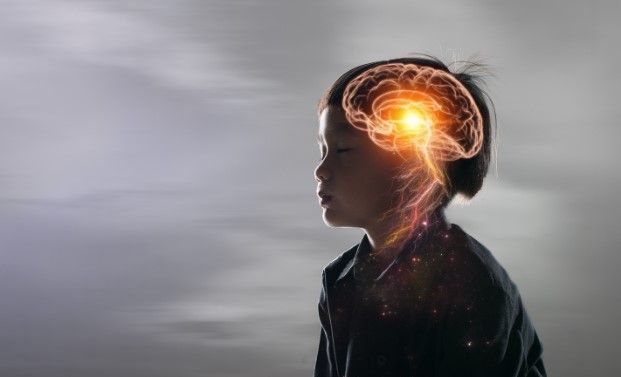“If a child can’t learn the way we teach, maybe we should teach the way they learn.” – Ignacio Estrada
Imagine being able to grasp complex quantum physics concepts while struggling to tie your shoelaces. Or having the ability to compose brilliant symphonies in your head but being unable to write them down due to dysgraphia. This is the reality for twice-exceptional (2e) children – children who are both intellectually gifted and face learning differences.
They straddle two worlds, each with its own misconceptions. Educators may see a student who either isn’t trying hard enough or is too advanced to need help. Parents can feel torn, trying to find accommodations for learning differences while nourishing their child’s unique gifts.
Common Misunderstandings
Twice-exceptional children often find themselves misunderstood in classrooms built for more uniform learners. Two misconceptions are particularly damaging:
1. “Learning disabled means not smart.” Many assume that struggling readers or kids with ADHD must have low intelligence. Coexisting high intelligence and a learning disability can hide each other, leaving adults unaware of the child’s true potential (Silverman, 2009).
2. “Giftedness is obvious high achievement.” Even if a child is gifted, learning challenges such as dysgraphia or processing disorders can suppress typical measures of intelligence like IQ scores. These kids may have brilliant ideas but struggle to express them on standardized tests or essays, leaving their giftedness hidden (Silverman, 2009).
The Internal Struggle
For a twice-exceptional child, daily life can feel like a rollercoaster. One moment, they might explain how ancient civilizations rose and fell; the next, they struggle to organize a simple paragraph. This volatility often leads adults to assume they’re not trying hard enough. Without proper support, 2e kids risk internalizing negative messages, thinking they’re “lazy” or “slow.”
The Tightrope Parents Walk
Parenting a 2e child can feel like a never-ending juggling act. On one hand, you have to push for advanced educational content to satisfy your child’s thirst for learning. On the other, you need accommodations that address their learning differences. Traditional gifted programs might not provide needed support for learning differences, while special education programs might not offer the intellectual stimulation these children crave. Parents often piece together tutors, therapists, extracurricular programs, and technology while balancing downtime and recovery.
The Brain’s “Airport Networks”
Human brains operate like interconnected transportation systems, with different “airports” (neural hubs) linking various functions (Barrett, 2021). Neurodivergence can be understood as a different “airport network” configuration: altered connectivity patterns may enable extraordinary attention to detail, pattern recognition, or unique cross-domain insights (Eide & Eide, 2023). Understanding these differences helps explain why neurodivergent individuals might excel in some areas while facing challenges in others.
Boundless Brilliance: Gifts That Lie Within
2e children exhibit remarkable talents:
1. Deep sensitivities that lead to nuanced observations and creative prowess (Gatto-Walden, 2017).
2. Focused intensity or hyperfocus, allowing rapid expertise in areas of interest.
3. Non-linear thinking—thinking in pictures, patterns, or systems—that can spark breakthroughs in engineering, music, architecture, and more (Eide & Eide, 2023).
Practical Strategies for 2e Success
How can we help twice-exceptional children bridge the gap between their talents and their learning barriers?
1. Strength-Based Learning: Build educational strategies around a child’s strengths while supplying targeted support in weaker areas (Trail, 2011).
2. Leverage Technology: Keyboarding, speech-to-text, text-to-speech, and assistive tools can help students express ideas and keep pace with coursework.
3. Emotional Support: Counseling or coaching helps 2e students understand that challenges do not invalidate their gifts and fosters self-advocacy.
4. Holistic Activities: Music training can enhance neural connectivity and provide non-verbal outlets; martial arts can support motor planning and emotional regulation (Doidge, 2007; Ratey & Hallowell, 2022).
5. Regular Breaks: Use approaches like the Pomodoro Technique—study intervals with short movement breaks—to improve focus and regulate emotions. See https://www.pomodorotechnique.com.
6. Compensation Strategies: Daily planners, visual reminders, noise-blocking earphones, and quiet workspaces support organization and concentration (Silverman, 2009).
7. Community and Peer Connection: Encourage connections with “true peers” who share interests or abilities to reduce isolation and foster social growth.
Unleashing the Bright Sparks of Tomorrow
Twice-exceptional children stand at the crossroads of brilliance and challenge. By reshaping our approach and acknowledging that intellect and learning differences can coexist, we can ignite the futures of these remarkable young minds. Every 2e child carries a spark that, with the right support, can burst into discovery, artistry, or innovation.
References
American Psychiatric Association. (2013). Diagnostic and statistical manual of mental disorders, fifth edition. Washington, DC.
Barrett, L. F. (2021). Seven and a half lessons about the brain. New York, Mariner Books.
Baum S.M., Schader, R.M., Owen S.V. (2017). To Be Gifted & Learning Disabled. Prufrock Press Inc. Published in 2021 by Routledge.
Cirillo, F. (2024). The Pomodoro Technique. https://www.pomodorotechnique.com
Dabrowski, K. (1964). Positive disintegration. Boston: Little, Brown.
Doidge, N. (2007). The brain that changes itself: stories of personal triumph from the frontiers of brain science. Viking.
Eide B., Eide F., (2023) The Dyslexic Advantage (Revised and Updated): Unlocking the Hidden Potential of the Dyslexic Brain. Plume.
Emerick, L. J. (1992). Academic underachievement among the gifted: Gifted Child Quarterly, 36(3), 140-146.
Gatto-Walden, P. (2017). Embracing the Whole Gifted Self. Royal Fireworks Publishing Co.
Kircher-Morris, E. (2022). Raising Twice-Exceptional Children. Routledge.
National Association for Gifted Children. (2010). Use of the WISC-IV for gifted identification. Retrieved from http://www.nagc.org/about-nagc/nagc-position-statements-white-papers
National Association for Gifted Children & The Council of State Directors of Programs for the Gifted. (2015). 2014-2015 state of the states in gifted education: Policy and practice data. Washington, DC.
Ratey, J. J., & Hallowell, E. M. (2022). A DHD 2.0: New Science and Essential Strategies for Thriving with Distraction-From Childhood Through Adulthood.
Silverman, L. K. (2009). The Two-Edged Sword of Compensation: How the Gifted Cope With Learning Disabilities. Gifted Education International, 25, 115-130.
Silverman, L. K. (2002). Upside-down brilliance: The visual-spatial learner. Denver: DeLeon.
Silverman, L. K. (2013). Giftedness 101. New York: Springer. https://doi.org/10.1891/9780826107985
Trail, A. B. (2011). Twice-exceptional gifted children: understanding, teaching, and counseling gifted students. Prufrock Press Inc.

